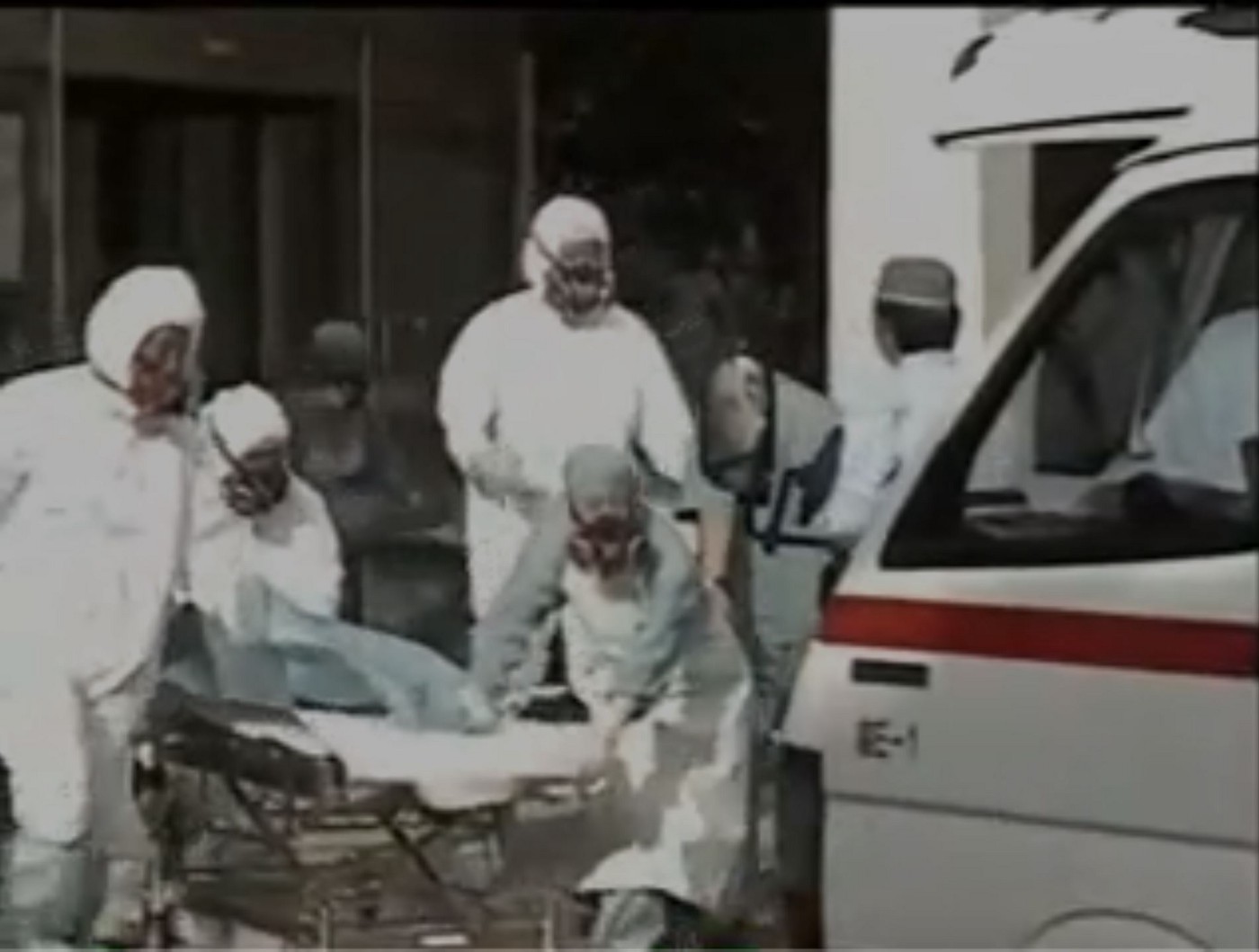Hisashi Ouchi is a name that resonates deeply with the narrative of nuclear accidents and the human experience in the face of tragedy. His story, often accompanied by haunting images and graphics, serves as a reminder of the fragility of life and the consequences of human error. The photos that depict his life and the events surrounding the Tokaimura nuclear accident are not just mere visuals; they tell a deeper story of pain, resilience, and the quest for understanding in a complex world.
The visuals associated with Hisashi Ouchi's life paint a vivid picture of his struggle against the odds after a catastrophic incident in 1999. These images, often graphic in nature, evoke powerful emotions and challenge viewers to contemplate the implications of technological advancement and safety protocols in nuclear energy. As we delve into the depths of these images, we uncover not just the facts of a tragic accident but the personal story of a man who faced unimaginable challenges.
As we explore the topic of "Hisashi Ouchi photos graphic," it becomes essential to consider the broader context of his life, the accident, and its aftermath. The visuals, while graphic, serve to educate and inform the public about the dangers associated with nuclear energy and the importance of rigorous safety measures. In this article, we will examine Hisashi Ouchi's biography, the events leading to the accident, and the graphic representations that have emerged in the wake of this tragedy.
What Was the Background of Hisashi Ouchi's Life?
Born in 1969 in Japan, Hisashi Ouchi was a young nuclear worker whose life took a tragic turn due to a severe accident at the Tokaimura nuclear facility. Hisashi was known for his dedication to his work, which unfortunately led him to be part of one of the most catastrophic nuclear incidents in Japanese history. The accident on September 30, 1999, left him with severe radiation burns and ultimately changed the course of his life forever.
Can We Explore Hisashi Ouchi's Personal Details?
| Detail | Description |
|---|---|
| Name | Hisashi Ouchi |
| Date of Birth | 1972 |
| Occupation | Nuclear Worker |
| Accident Date | September 30, 1999 |
| Place of Accident | Tokaimura, Japan |
| Outcome | Severe Radiation Exposure |
| Date of Death | December 21, 1999 |
What Happened During the Tokaimura Nuclear Accident?
The Tokaimura nuclear accident occurred when two workers at the facility improperly handled uranium fuel, leading to a criticality accident that resulted in a massive release of radiation. Hisashi Ouchi, who was present during the incident, suffered extreme radiation exposure, leading to severe health complications. This event not only affected Ouchi but also raised serious concerns about nuclear safety protocols in Japan.
How Did Hisashi Ouchi's Accident Affect Nuclear Safety Regulations?
The aftermath of Hisashi Ouchi's accident prompted a comprehensive review of nuclear safety regulations in Japan. The incident highlighted significant flaws in the safety protocols and operational procedures at the Tokaimura facility, leading to an overhaul of the nuclear industry’s safety measures. It also ignited a national conversation about the risks associated with nuclear energy and the need for stringent safety training for workers.
What Are Some Notable Graphic Representations of Hisashi Ouchi's Story?
The "Hisashi Ouchi photos graphic" not only serve as documentation of the tragic incident but also as tools for education and awareness. These images often depict the harsh realities of radiation exposure and its effects on the human body. Some notable representations include:
- Graphic images of Hisashi Ouchi during his hospitalization, showcasing the physical toll of radiation.
- Photographs from the Tokaimura nuclear facility, illustrating the environment where the accident occurred.
- Visuals of protests and public outcry following the incident, highlighting societal concerns about nuclear safety.
- Infographics detailing the sequence of events leading to the accident and its aftermath.
What Lessons Can Be Learned from Hisashi Ouchi's Tragic Story?
The story of Hisashi Ouchi serves as a poignant reminder of the human cost of industrial accidents and the importance of safety in high-risk environments. It emphasizes the need for rigorous training, adherence to safety protocols, and the ethical responsibility of companies to protect their employees. Furthermore, it raises awareness about the long-term health effects of radiation exposure and the importance of comprehensive healthcare for affected individuals.
How Can We Remember Hisashi Ouchi and Honor His Legacy?
Remembering Hisashi Ouchi goes beyond recalling the tragic events of the Tokaimura accident. It involves advocating for nuclear safety, supporting victims of radiation exposure, and promoting the responsible use of nuclear technology. Memorials and educational initiatives can serve as platforms to honor his legacy and ensure that such an incident is never repeated.
What Steps Can Be Taken to Prevent Future Accidents?
To prevent future accidents similar to the Tokaimura incident, the following steps are crucial:
- Enhancing safety training programs for nuclear workers.
- Implementing stricter regulations and oversight of nuclear facilities.
- Promoting a culture of safety within the nuclear industry.
- Encouraging transparency and open communication regarding safety protocols.
In conclusion, the "Hisashi Ouchi photos graphic" encapsulate a tragic yet significant chapter in the history of nuclear energy. His story serves as a reminder of the human element in technological advancement and the ongoing need for vigilance in safety practices. Through the exploration of his life, background, and the impact of the Tokaimura accident, we can honor his memory and work towards a safer future for all.
A Deep Dive Into Aubreigh Wyatt's Dad: Who Is He?
Unveiling The Mystique: The Age Of Rebecca Feek
Unveiling The Charm: Navya Naveli Nanda's Height And More



ncG1vNJzZmiqn5i4o77InZ6emqKqtq%2B%2FjaipoGeVo8Oqvs6npJ6mpJa5ra3WrKqtqpWjtLW0xKecnWeYnsCiv8eiZKitk522brzHqKuoq12cv6K8x6KaZ6Ckork%3D